We return with Mingyang to announce that it has completed the assembly of its double-rotor platform OceanX, equipped with two MySE 8.3-180 wind turbines.
Several videos are circulating online about the assembly process that are truly worth watching.
The spectacular floating double-rotor platform by Mingyang
In the quest to make floating wind power a reliable, competitive, and mainstream technology, we are witnessing a true (and exciting) technological race.
A race in which different companies of all kinds propose and patent innovative solutions and transform them into spectacular prototypes that serve to test in real conditions the mistakes (and successes) made during their development. Floating laboratories from which to learn on the fly.

So far, most of these solutions involve designing different types of floaters that differ both in their physical form (barge, semi-submersible, spar, TLP…) and in the materials from which they are made (steel or concrete).
However, some players, in what is a riskier move, have bet on platforms capable of hosting two or more rotors on the same structure.
But what advantages do multi-rotor wind turbines have? Why is there so much movement around this type of design?
Well, on one hand, developing wind turbines with multiple rotors would allow for slowing down the growth in the size of turbines, at least regarding the nacelle, hub, and blades. Basically, installing 2 turbines of 8 MW or 4 turbines of 4 MW on the same structure instead of a single 16 MW turbine. Some even propose many units of 250 kW turbines.
This halt in size growth is an idea that has been floated in the industry for some time, and although it hasn’t fully materialized (especially in the case of Chinese OEMs), signs of deceleration are already being detected.
Containing the size of the turbines would, in turn, allow for improving, optimizing, and making existing models more reliable, in addition to reducing costs through the industrialization of manufacturing processes (it is difficult to automate and optimize anything if every year you have to remodel the factory for a new and larger model).
Tests conducted so far in various projects also show signs of improvements in wake effects, increasing total generation in parks with many turbines.
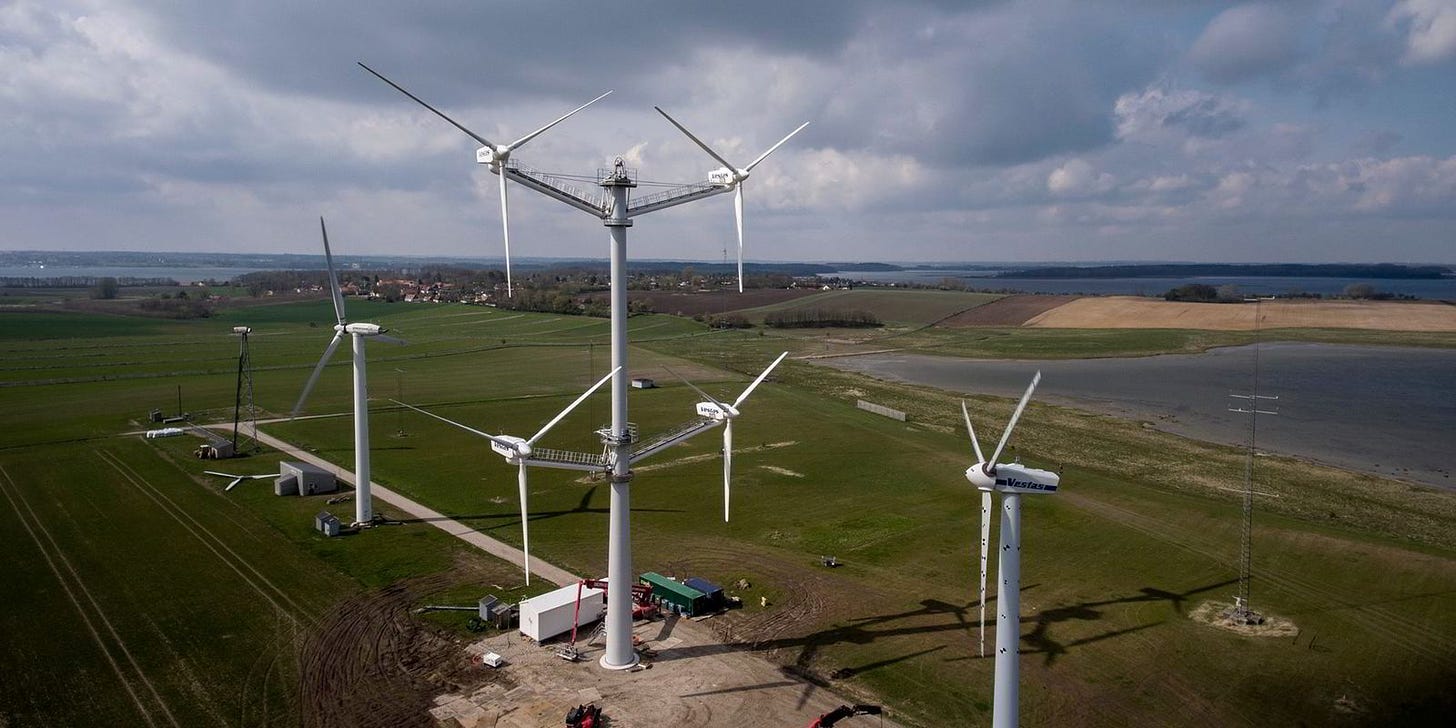
The multi-rotor concept is something that has already been tested previously onshore. Many of you might recall the endearing prototype of four rotors that Vestas tested for 3 years at the Østerild Test Centre with promising results. Or the not-so-endearing double rotor prototype (on the same axis) by CSSC Haizhuang Wind Power. Additionally, CENER presented a simulation tool a year ago to support the development of this type of technology.
Regarding offshore, we have the case of the Spanish company EnerOcean, which tested its Wind2Power prototype at the PLOCAN facilities in the Canary Islands. We also have Hexicon and its TwinHub, which should install two prototype units of 2×8 MWs between 2025 and 2027.
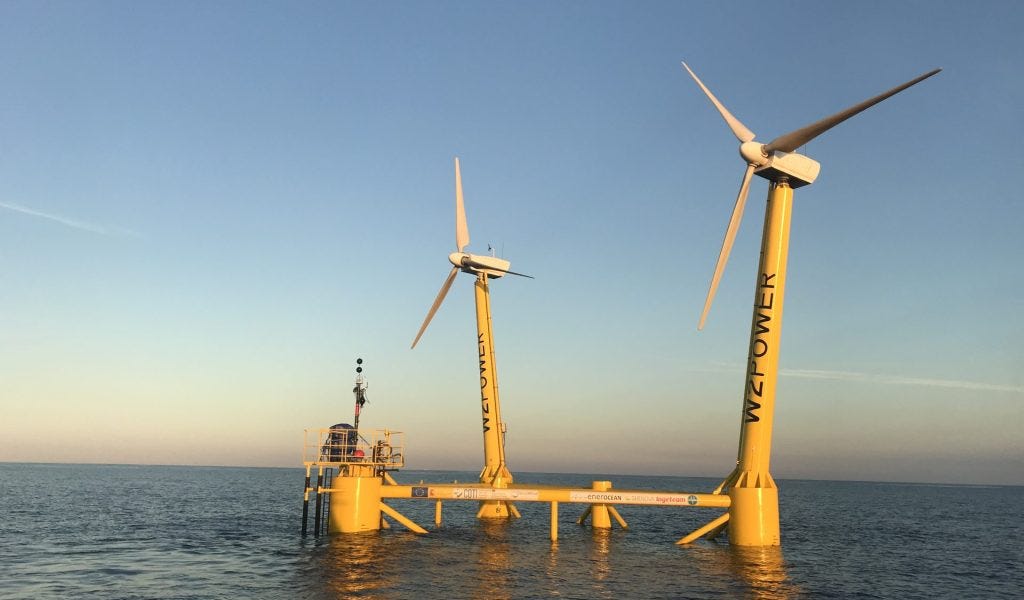
And lastly (though I’m sure I’m missing some), we have Mingyang and its Nezzy² (designed by Aerodyn), a concept that already had a 1/10 scale prototype in Germany in 2020, and another one is currently being installed, this time at a commercial scale.
So, after all the predecessors, it will finally be the Chinese manufacturer Mingyang that is the first to test a design of this type and real size.
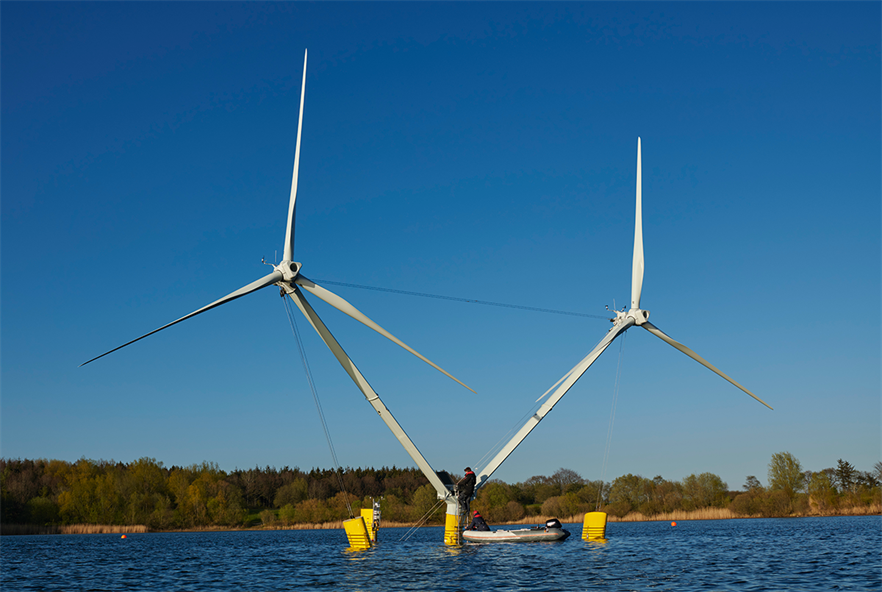
Windpowermonthly, through Eize de Vries, has gained exclusive access to pictures and data of this prototype named OceanX. The platform, with a total of 16.6 MW (2×8.3 MW), is currently in the assembly process to be later towed to its final location 700 kilometers away on the southeast coast of China. Specifically, at the Huangchuan shipyard, near Mingyang’s headquarters in Zhongshan, Guangdong.
The 16.6 MW of power makes it the world’s most powerful floating platform. An interesting fact is that Mingyang is the designer of both the platform and the turbine, which undoubtedly can lead to significant optimizations as the design is done holistically (rather than the turbine on one side and the floating platform on the other).
The truth is that the pictores are spectacular, although I’m not sure if they do justice to its true size. Just think that those blades measure 90 meters.
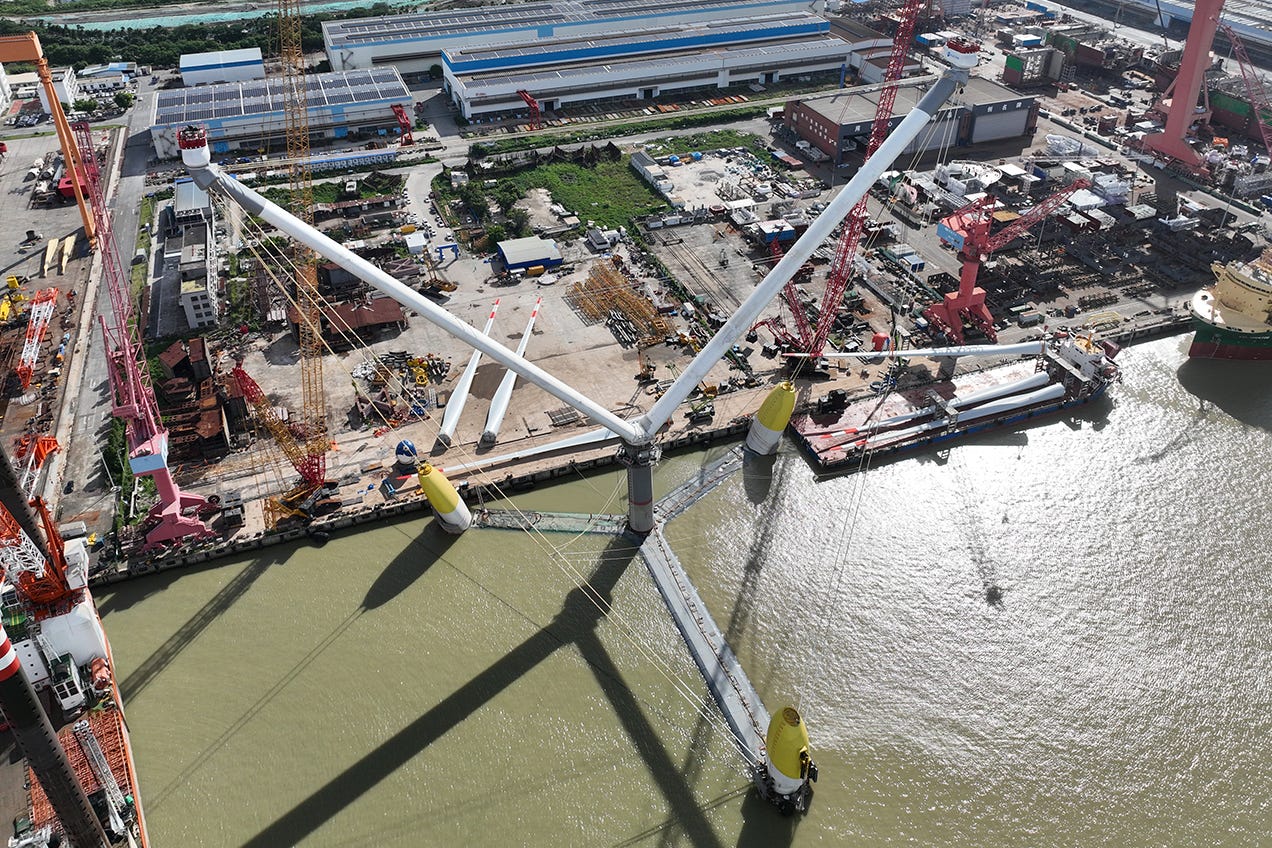
As you can see, the floater consists of three main elements: a long “leg” with a swivel mooring system and two shorter ones in a V-shape. Additionally, it has several steel stays that help the structure withstand the loads.
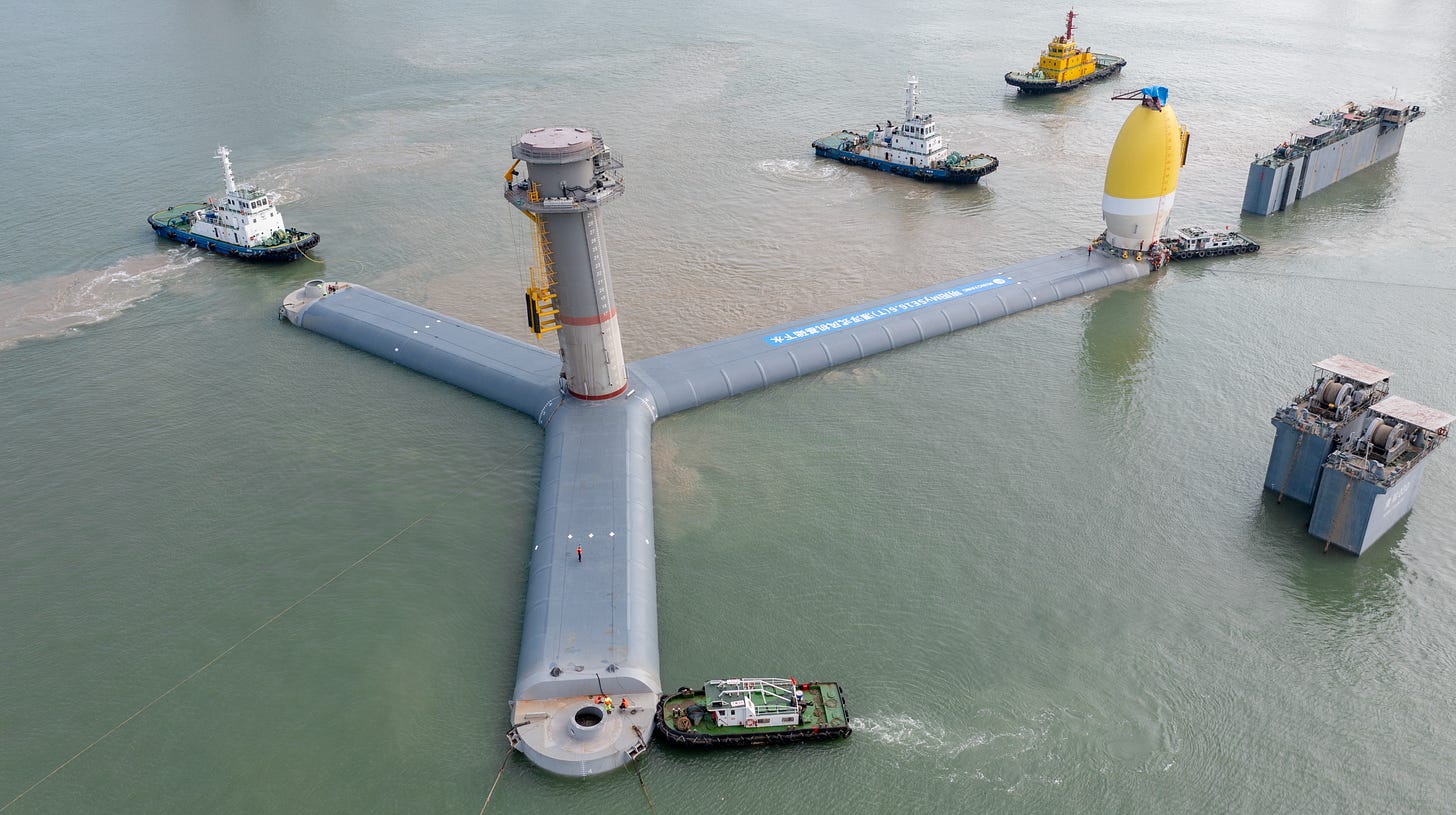
The turbines installed on the platform are two MySE 8.3-180 with Mingyang’s super compact drivetrain. The following photo of the two nacelles is spectacular.
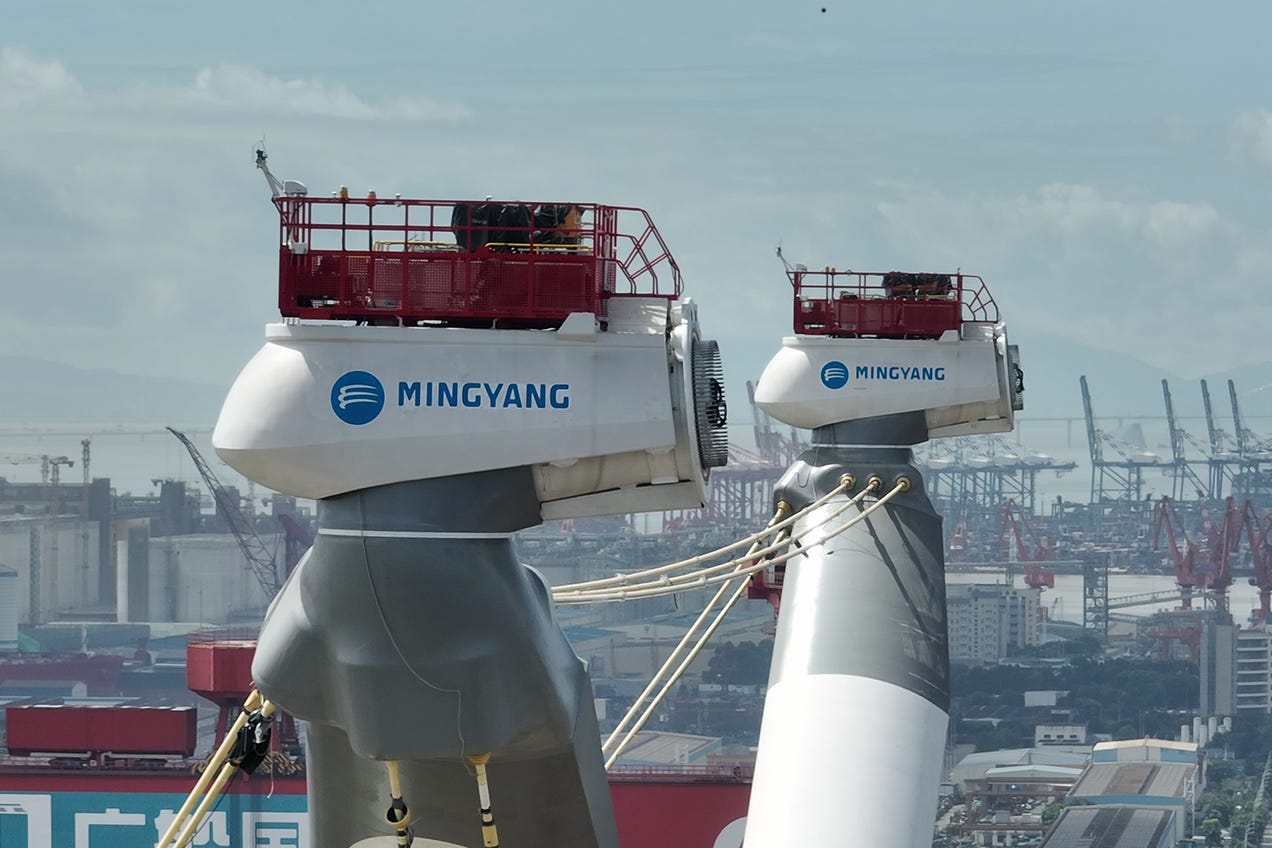
It is expected to reach Technology Readiness Level (TRL) 9, which would qualify it for full commercial application. Mingyang’s initial market focus includes China and the Asia-Pacific region, with interest in Japan, South Korea, and the Philippines.
A video has also been shared on social media, showing the assembly process and giving a better sense of the platform’s magnitude.
Windletter #84


